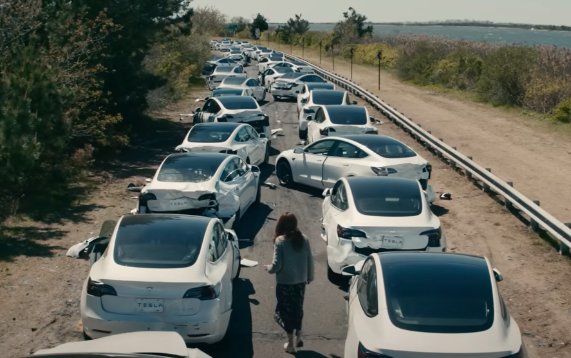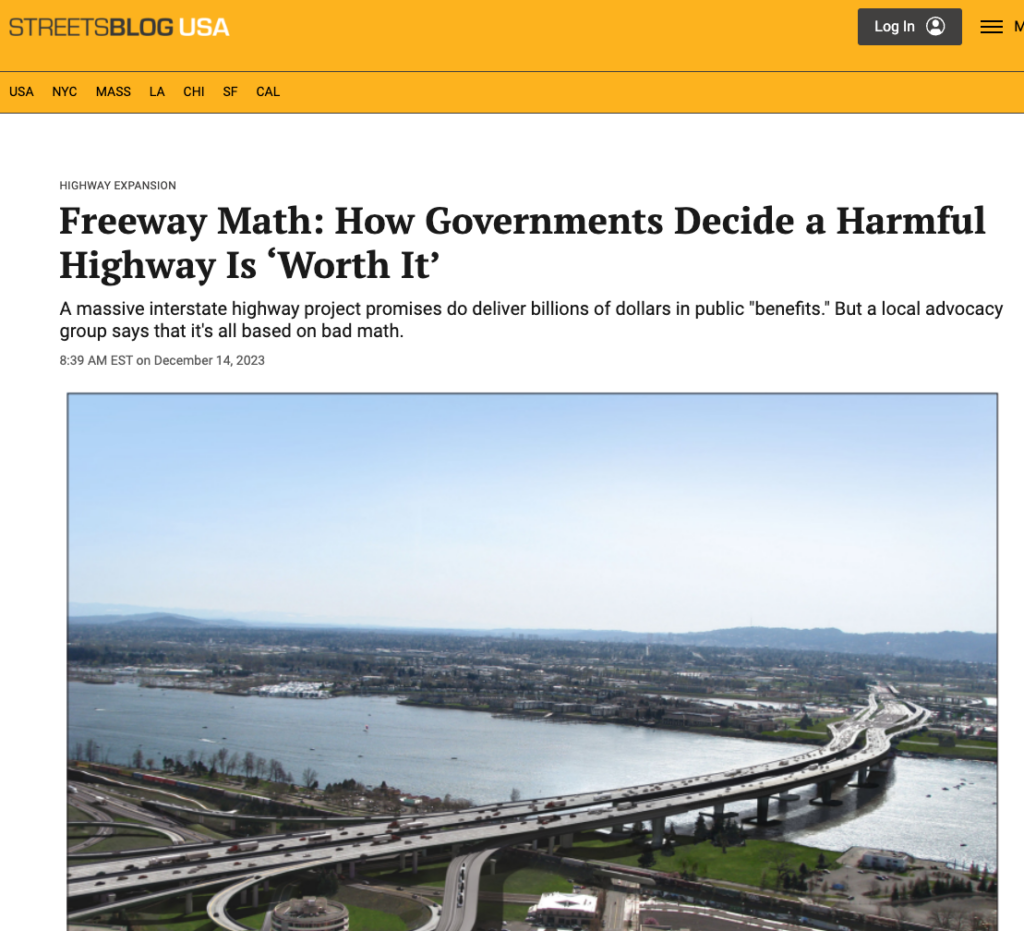What City Observatory did this week
Exaggerated Benefits, Omitted Costs: The Interstate Bridge Boondoggle. A $7.5 billion highway boondoggle doesn’t meet the basic test of cost-effectiveness. The Interstate Bridge Project is a value-destroying proposition: it costs more to build than it provides in economic benefits
Federal law requires that highway projects be demonstrated to be “cost-effective” in order to qualify for funding. The US Department of Transportation requires applicants to submit a “benefit-cost” analysis, that shows that the economic benefits of a project exceed its costs. We take a close, critical look at the benefit-cost analysis prepared for the proposed Interstate Bridge Replacement (IBR) project between Portland and Vancouver.
City Observatory’s analysis of the Interstate Bridge Replacement Benefit-Cost Analysis (IBR BCA) shows that it is riddled with errors and unsubstantiated claims and systematically overstates potential benefits and understates actual costs.
- It dramatically understates the actual cost of the project, both by mis-stating initial capital costs, and by omitting operation and maintenance and periodic capital costs and toll charges.
- The construction period is under-estimated, which likely understates capital costs, and overstates benefits
- In addition, the study also omits the toll charges paid by road users from its definition of project costs, in clear violation of federal benefit-cost guidelines.
- In addition, the IBR BCA study dramatically inflates estimated benefits.
- It uses an incorrect occupancy estimate to inflate the number of travelers benefiting from the project.
Federal funding for the IBR project can’t go forward unless the benefit-cost analysis shows the project is cost-effective. This report, which is replete with errors, omissions and highly questionable assumptions was prepared, not by some independent expert, but by WSP, a private consultant that holds more than $70 million in contracts to work on the IBR project—contracts that would very much be in jeopardy if the numbers in the benefit-cost study didn’t come out right. But neither WSP nor the two state highway departments revealed this conflict of interest.
Must Read
Why is it so hard to get a red-light camera? Angeleno (and some time City Observatory contributor), Miriam Pinski describes her experience trying to get a red light camera for an intersection in her neighborhood—one that has already cost the lives of some of her neighbors. Red light cameras have been shown to significantly improve safety by discouraing red-light running, but the city council has made it all but impossible to get one on her street. Some object to red light cameras as a revenue raising scam, but cameras could easily be tuned to focus entirely on safety. As Pinski relates:
Many of the problems with automated enforcement cameras, though, are eminently solvable. Los Angeles could make the first violation free and then implement a graduated system for fines, so the more red lights you run, the more you pay. After all, the certainty of getting caught matters more than the severity of the punishment.
The year of the E-Bike: David Zipper argues that the most important transportation breakthrough of the year was the growing adoption of electric bicycles. Writing at Fast Company, Zipper contrasts the widespread and successful growth of electric bike ownership and access to the continuing troubles plaguing the much over-hyped self-driving car. The differences in the roll-out of the two technologies couldn’t be more striking: self-driving is the province of a handful of very large firms, spending billions, which have produced a relative handful of vehicles, and which seem to pose huge safety risks to road users. Meanwhile, e-bikes are a modest and simple upgrade to a robust technology, are cheap, pervasive and provided by hundreds of competing firms with their own innovative approaches. A recent high profile crash of a self-driving Cruise vehicle in San Francisco, and the recall of 2 million Teslas is a stark reminder of the risks of autonomous vehicles; a theme punctuated by Netflix, which depicted dozens of Tesla’s run amuck nearly killing Julia Roberts:

As Zipper notes:
E-bikes raise no such existential concerns. On the contrary, all signs indicate that a city full of e-bikes would be safer, healthier, cleaner, and less congested than one dominated by cars—no matter how they are driven. And e-bikes really are car replacers: The addition of a battery can enable even mobility-constrained cyclists to conquer hills, haul packages, or beat the heat. Better yet, families can save tens of thousands of dollars by using an e-bike in lieu of a second or third car. And lest we forget: E-bikes are fun.
In the News
Streetsblog featured a story on our critique of the benefit-cost analysis prepared to justify the $7.5 billion Interstate Bridge Replacement project.


